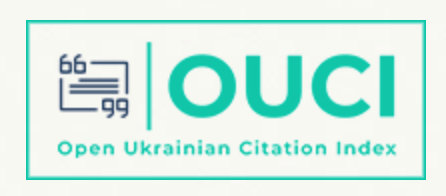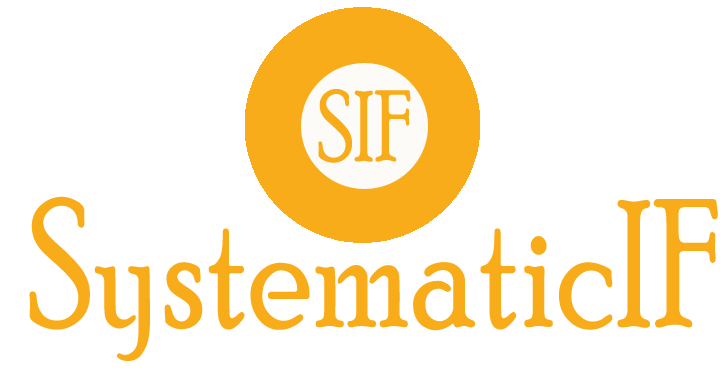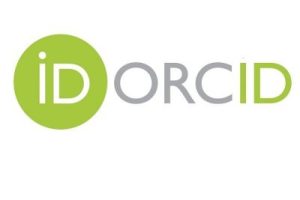Ukrainian adaptation of the Generalized Anxiety Disorder scale (GAD-7): diagnostic experience in the state of martial law
Abstract
The aim of the research is to develop a Ukrainian-language adaptation of the GAD-7 generalized anxiety disorder assessment methodology and to test its psychometric properties. Methods. The forward and backward translation was carried out independently by several specialists with professional backgrounds in English philology and psychology, and then subjected to expert consistency checks. The data was collected online in two stages (December 2023, January 2024). The sample consisted of civilian Ukrainians aged 17–75 who lived in different regions of the country or were in forced migration abroad (786 and 315 people respectively), with a predominance of women with higher education. The results demonstrate the high psychometric competence of the adapted instrument. Excellent internal consistency and discriminant validity of the items were confirmed, as well as retest reliability, construct and criterion validity of the scale (correlations with the Adult Mental Health Questionnaire and the Positive Mental Health Scale). The factor structure of the methodology corresponds to the original univariate model. The GAD-7 indicator fairly accurately predicts the need to seek psychological help, has strong direct correlations with diagnostic variables measuring anxiety and depression, and negatively correlates with assessments of psychological health. At the same time, empirical indicators of the GAD-7 in the sample are distributed abnormally: more than 40.0% of respondents received a score of 10 or more points, which corresponds to the manifestation of pathological symptomatology. Such assessments are not recommended to be unequivocally interpreted as evidence of generalized anxiety disorder, as they may reflect a legitimate impact of prolonged military aggression on the psycho-emotional state of Ukrainians (maladaptive response to chronic stress, psychological trauma, etc.). Both statuses are indicative of mental health disorders and require appropriate interventions, but the ways and means of this care differ. The average anxiety score of women is significantly higher than that of men (9.70 and 6.93, respectively), which is consistent with the natural features of this condition. Conclusions. The adapted Ukrainian-language version of the GAD-7 is an effective tool for screening symptoms of anxiety disorder in psychological practice and scientific research, including in extreme living conditions. In a martial law situation, clinical disorders associated with anxiety should be distinguished from situationally conditioned reactions to objective danger, which requires additional research.
Downloads
References
Ansseau M., Fischler B., Dierick M., Albert A., Leyman S., Mignon A. Socioeconomic correlates of generalized anxiety disorder and major depression in primary care: the GADIS II study (Generalized Anxiety and Depression Impact Survey II). Depression and Anxiety. 2008. Vol. 25(6). Р. 506-513. https:// doi.org/10.1002/da.20306
Basińska B. A., Kwissa-Gajewska Z. Psychometric Properties of the Polish Version of The Generalized Anxiety Disorder 7-Item Scale (GAD-7) in a Non-Clinical Sample of Employees During Pandemic Crisis. International Journal of Occupational Medicine and Environmental Health. 2023. Vol. 36(4). Р. 1–12. https://doi.org/10.13075/ijomeh.1896.02104
Chong S. A., Abdin E., Vaingankar J. A., Heng D., Sherbourne C., Yap M., Lim Y. W., Wong H. B., Ghosh-Dastidar B., Kwok K. W., Subramaniam M. A population- based survey of mental disorders in Singapore. Annals of the Academy of Medicine of Singapore. 2012. Vol. 41(2). Р. 49–66. URL: https://www. annals.edu.sg/pdf/41VolNo2Feb2012/V41N1p49. pdf
Donker T., van Straten A., Marks I., Cuijpers P. Quick and easy self-rating of Generalized Anxiety Disorder: Validity of the Dutch web-based GAD-7, GAD-2 and GAD-SI. Psychiatry Research. 2011. Vol. 188, Is. 1. P. 58-64. https://doi.org/10.1016/j. psychres.2011.01.016
Hankins M. Questionnaire discrimination: (re)-introducing coefficient δ. BMC Medical Research Methodology. 2007. Vol. 7, 19. https://doi. org/10.1186/1471-2288-7-19
Herr N. R., Williams J. W. Jr, Benjamin S., McDuffie J. Does this patient have generalized anxiety or panic disorder?: The Rational Clinical Examination systematic review. JAMA. 2014. Vol. 312(1). Р. 78-84. https://doi.org/10.1001/jama.2014.5950
Jackson J. L., Passamonti M., Kroenke K. Outcome and impact of mental disorders in primary care at 5 years. Psychosomatic medicine. 2007. Vol. 69(3). Р. 270-276. https://doi.org/10.1097/ PSY.0b013e3180314b59
Kessler R. C., Brandenburg N., Lane M., Roy-Byrne P., Stang P. D., Stein D. J., Wittchen H.-U. Rethinking the duration requirement for generalized anxiety disorder: evidence from the National Comorbidity Survey Replication. Psychological Medicine. 2005. Vol. 35(7). Р. 1073-1082. https://doi.org/10.1017/ s0033291705004538
Kroenke K., Spitzer R. L., Williams J., Monahan P. O., Löwe B. Anxiety disorders in primary care: prevalence, impairment, comorbidity, and detection. Annals of Internal Medicine. 2007. Vol. 146(5). Р. 317- 325. https://(COVID-19 Mental Disorders Collaborators). Global prevalence and burden of depressive and anxiety disorders in 204 countries and territories in 2020 due to the COVID-19 pandemic. Lancet, Vol. 398, Is. 10312. Р. 1700 – 1712. https://doi. org/10.1016/S0140-6736(21)02143-7
Spitzer R. L., Kroenke K., Williams J., Löwe B. A Brief Measure for Assessing Generalized Anxiety Disorder: the GAD-7. Archives of Internal Medicine. 2006. Vol. 166. Р. 1092-1097. https://doi.org/10.1001/ archinte.166.10.1092
Ströhle A., Gensichen J., Domschke K. The Diagnosis and Treatment of Anxiety Disorders. Deutsches Ärzteblatt International. 2018. Vol. 155 (37). Р. 611- 620. https://doi.org/10.3238/arztebl.2018.0611.
Vinogradova V. V., Kivite-Urtane A., Vrublevska J., Rancans E. Anxiety Screening among the General Population of Latvia and Associated Factors. Medicina (Kaunas). 2022. Vol. 58(9), 1163. https://doi. org/10.3390/medicina58091163
World Health Organization (WHO). Anxiety or fear-related disorders. ICD-11 for Mortality and Morbidity Statistics. Eleventh Revision, 2024-01. Reference Guide. URL: https://icd.who.int/browse/2024-01/ mms/en#1336943699
World Health Organization (WHO). Depression and Other Common Mental Disorders Global Health Estimates. Geneva : World Health Organization, 2017. 24 р. URL: https://www.who.int/ publications/i/item/depression-global-health-estimates
Yang X., Fang Y., Chen H., Zhang T., Yin X., Man J., Yang L., Lu M. Global, regional and national burden of anxiety disorders from 1990 to 2019: results from the Global Burden of Disease Study 2019. Epidemiology and Psychiatric Sciences. 2021. Vol. 30, e36. https://doi.org/10.1017/S2045796021000275
Асанова А., Хаустова О., Чабан О., Прохорова О., Кузьмицький M., Тимощук Є., Авраменко О. Психічні порушення у госпітальних пацієнтів в гострій фазі COVID‑19. НейроNews: психоневрологія та нейропсихіатрія. 2021. № 8 (129). С. 33-37. https://doi. org/10.26766/PMGP.V6I2.304
Вельдбрехт О. О., Тавровецька Н. І. Шкала сприйнятого стресу (PSS-10): адаптація та апробація в умовах війни. Проблеми сучасної психології. 2022. № 2(25). P. 16‒27. https://doi. org/10.26661/2310-4368/2022-2-2
Звєрєва І. Д., Кияниця З. П., Кузьмінський В. О., Петрочко Ж. В., Саммон І. Оцінка потреб дитини та її сім’ї / заг. ред. І. Д. Звєрєвої. К. : Держсоцслужба, 2007. 144 с. URL: http://archive. p4ec.org.ua/upload/library/pdf/Child_Needs_ Assesment.pdf
Карамушка Л., Терещенко К., Креденцер О. Адаптація на українській вибірці методик “The Modified BBC Subjective Well-being Scale (BBC-SWB)” та “Positive Mental Health Scale (PMHscale)”. Організаційна Психологія. Економічна Психологія, 2022. Вип. 3(27). С. 85-94. https:// doi.org/10.31108/2.2022.3.27.8
Максименко С. Д., Яковлева Н. Ю. Генералізований тривожний розлад у міжнародному форматі DSM-V у людей з вадами слуху в їхньому соціальному житті. Психологічний часопис. 2018. Вип. 4(5). С. 98–112. https://doi. org/10.31108/1.2018.5.15.7
Орос М. М., Іваньо Т. В. Панічний і генералізований тривожний розлади. У страху очі великі? Здоров’я України. Тематичний номер “Неврологія, Психіатрія, Психотерапія”. 2018. № 3(46). С. 17-18. URL: https://health-ua.com/ article/40056-panchnij-generalzovanij-trivozhnij- rozladi--ustrahu-och-velik Чабан О. С., Хаустова О. О. Психічне здоров’я в період пандемії COVID-19 (особливості психологічної кризи, тривоги, страху та тривожних розладів): реалії та перспективи. НейроNews: психоневрологія та нейропсихіатрія. 2020. № 3 (114). С. 1–10. https://neuronews.com.ua/ uploads/issues/2020/3(114)/nn20_3_26-36.pdf
Authors who publish with scientific journal agree to the following terms:
• All scientific papers may be freely copied and distributed on any medium and in any format, provided that the references to the initial data of the scientific work are indicated.
• Authors retain copyright and grant the journal right of first publication with the work simultaneously licensed Creative Commons Attribution License .
• Authors are able to enter into separate, additional contractual arrangements for the non- exclusive distribution of the journal’s published version of the work (institutional repository, your website, monograph), with an acknowledgement of its initial publication in this journal.





































